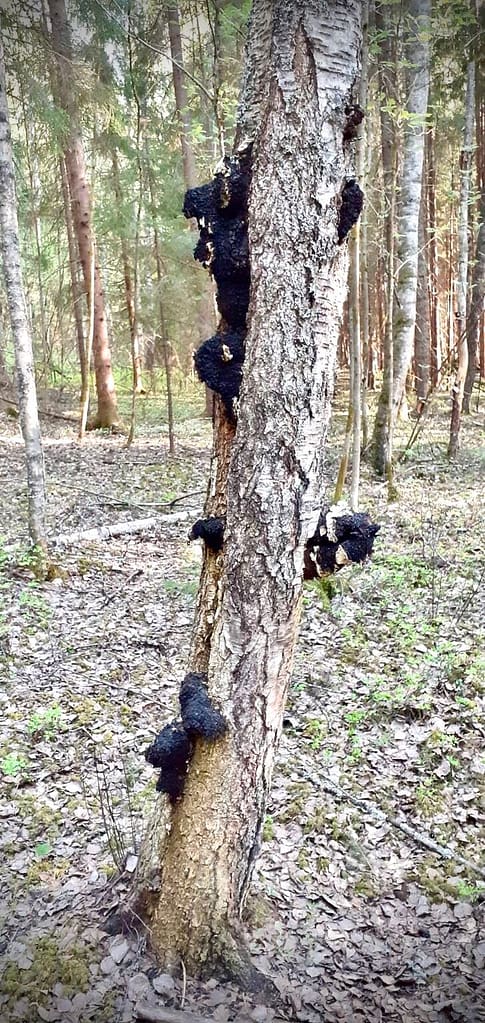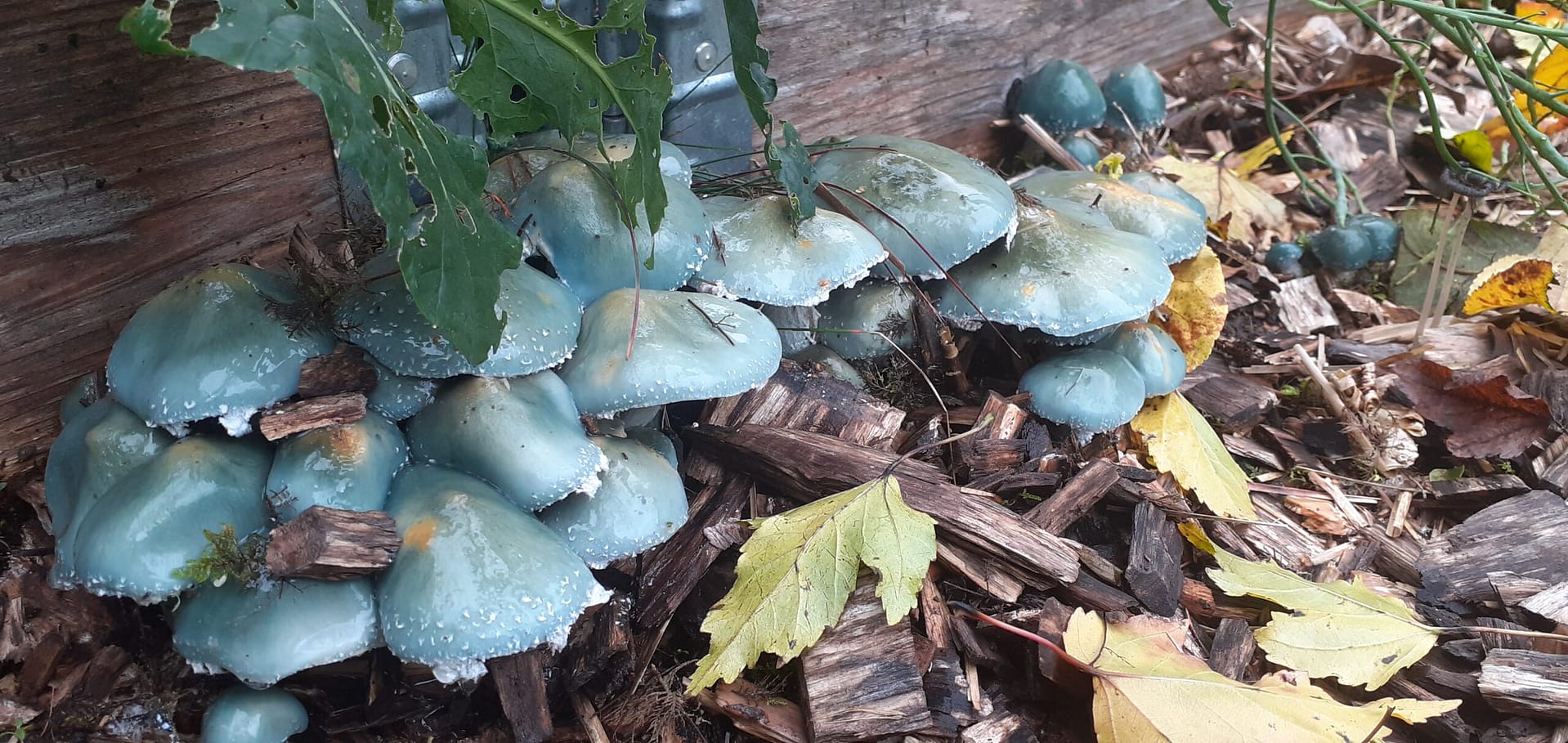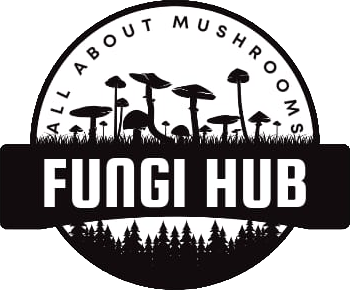
A wonderful find in the forest today: wild chaga from Sweden, growing on a birch tree.
The Chaga mushroom is actually a parasite, which usually grows on birch, but sometimes on aspen, and some other species. The outside of the Chaga is black in color, and very irregular in shape. It can therefore be hard to recognise it with an untrained eye. The inside has a bright orange color and has a cork-like texture.
There is some debate about whether chaga is harmful to its host or not. It tends to colonise wounds in the tree, such as from torn off branches. Commonly people assume that the chaga will eventually kill the tree. However, there are countless examples of big old and very healthy looking trees, with a very clear chaga ‘infection’. In many cases the chaga has been there for many years. Clearly, then, the mushroom is in no hurry to kill its host. It may therefore be true that chaga in fact protects the tree from invasion from more directly lethal fungi.
Since we civilised humans have a clear tendency to think way too much in terms of competition, perhaps we should consider the latter option quite a bit more seriously. Cooperation is at least as common in nature as competition. The fact that chaga can have a wide range of benefits for us humans as well, seems to point further in that direction.
Chaga (Inonotus obliquus) mushroom deserves to be ranked as a genuine miracle of nature. Scientific research has shown that Chaga has a strong antibacterial and anti-inflammatory effect, and has the ability to strengthen and even teach your immune system. Plus, a lot more!
You can use chaga in different forms. You can simmer the raw powedered mushroom for a medicinal tea, and you can make tinctures and dual extracts from it. Especially with the latter, which combines alcohol and water extraction, the maximum range of ingredients is extracted from the cells.
You will find a range of Chaga products here. This will include wild chaga from the forests around us in Sweden, when available.


Leave a Reply